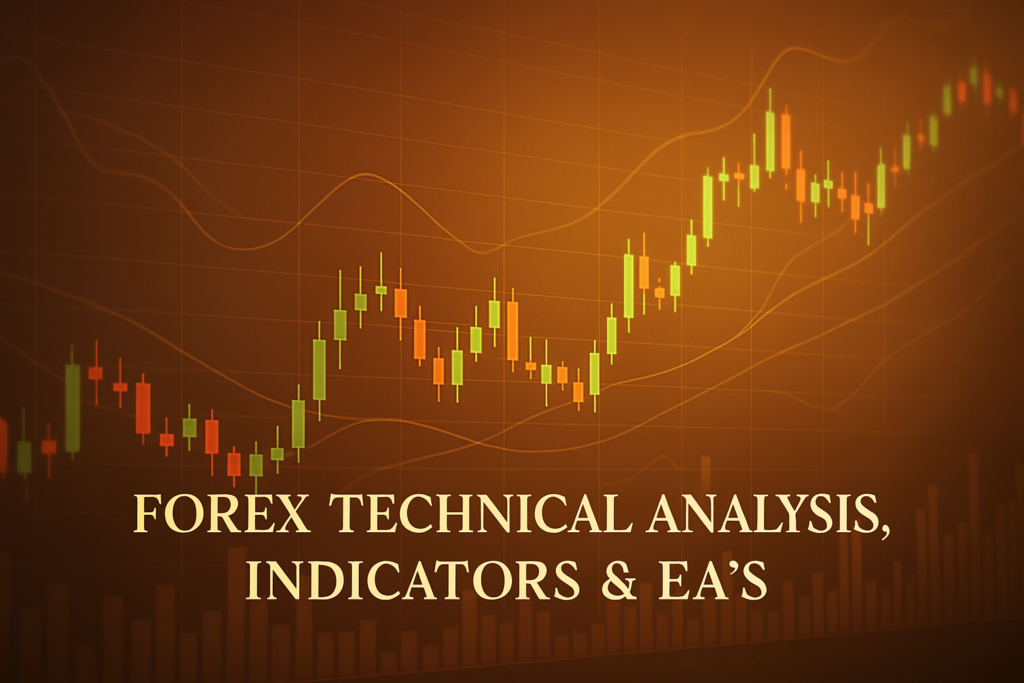
Moving average line chart helps traders analyze trends and make informed decisions in Forex trading.
The moving average line chart is a powerful tool in Forex trading. It helps traders analyze price trends and make informed decisions. With this chart, you can visualize how prices are moving over time, making it easier to spot trends and potential trading opportunities.
However, many traders, both beginners and professionals, often struggle with interpreting these charts. They may feel overwhelmed by the different types of moving averages and how to apply them effectively. Understanding how to use the moving average line chart is crucial. It can significantly enhance your trading strategy and improve your chances of success.
In this article, we will explore the moving average line chart in detail. You will learn about its types, advantages, disadvantages, and how to apply it in your trading strategy. We’ll also discuss some trading strategies that incorporate the moving average line chart for optimal results.
For instance, if you’re interested in the USDJPY analysis forecast, you’ll find valuable insights that can help you make informed decisions. Now, let’s dive into the fascinating world of moving average line charts!
What is a Moving Average Line Chart?
A moving average line chart is a visual representation of an asset’s price over time. Think of it as a smooth line that tracks the average price. Instead of seeing all the ups and downs of price movements, the moving average gives you a clearer picture of the overall trend.
Types of Moving Average Line Chart
There are several types of moving averages:
- Simple Moving Average (SMA): This is the most basic type. It calculates the average price over a specified number of periods.
- Exponential Moving Average (EMA): This type gives more weight to recent prices, making it more responsive to price changes.
- Weighted Moving Average (WMA): This one assigns different weights to prices, allowing you to focus more on certain periods.
How Moving Average Line Chart Smooths Out Price Action
The moving average line chart smooths out price fluctuations, making it easier to identify trends. Imagine trying to read a book with lots of scribbles on the pages. It would be confusing! The moving average acts like an eraser, removing the noise and highlighting the main story.
Common Periods Used and Why
Traders often use different periods for moving averages, such as 10, 20, 50, or 200 days. Shorter periods (like 10 or 20 days) are useful for identifying short-term trends. In contrast, longer periods (like 50 or 200 days) help to spot long-term trends. Choosing the right period can help you align your strategy with your trading goals.
The History of Moving Average Line Chart
Origin of Moving Average Line Chart
The concept of the moving average dates back to the early 1900s. It was introduced by a statistician named Charles Dow. He wanted a way to analyze stock prices and identify trends. His idea laid the foundation for modern technical analysis.
When Did Traders Start Using It Widely?
As markets evolved, traders began to adopt the moving average line chart in the 1960s and 1970s. With the rise of computers, it became easier to calculate moving averages, leading to its widespread use in Forex trading.
Real-Life Stories
Many professional traders credit the moving average line chart for their success. For instance, a trader might have noticed a crossover between a short-term and long-term moving average. This signal prompted them to buy, leading to significant profits as the price surged.
Advantages and Disadvantages of Moving Average Line Chart
Advantages:
- Helps Identify Trends Easily: The moving average line chart clearly shows whether the market is in an uptrend or downtrend.
- Useful for Dynamic Support and Resistance: Moving averages can act as support or resistance levels, guiding your trades.
- Works Well for Crossover Strategies: Traders often use moving average crossovers as buy or sell signals, enhancing their strategies.
Disadvantages:
- Lags Behind Price Movements: Since moving averages are based on past prices, they can lag, causing delayed signals.
- Can Give False Signals in Sideways Markets: In a ranging market, moving averages may produce confusing signals, leading to potential losses.
How to Apply Moving Average Line Chart on MT4 & MT5
Step-by-step Guide to Adding Moving Average Line Chart on Charts
To add a moving average line chart on MT4 or MT5, simply go to the ‘Insert’ menu, select ‘Indicators,’ then choose ‘Trend,’ and finally select ‘Moving Average.’
Customizing Moving Average Line Chart Settings
You can customize the settings by changing the period, colors, and types of moving averages according to your trading strategy. Experiment with different settings to find what works best for you.
Saving Templates for Easy Application
Once you have your preferred moving average settings, save it as a template. This allows you to quickly apply it to any chart in the future.
5 to 7 Trading Strategies Using Only Moving Average Line Chart
All Time Frame Strategy (M5 to D1)
This strategy works across different time frames, making it versatile. Traders look for crossovers between short and long-term moving averages to determine buy or sell signals.
Trending Strategies
In trending markets, use a combination of short-term and long-term moving averages. When the short-term crosses above the long-term, it’s a buy signal. Conversely, a crossover below indicates a sell signal.
Counter Trade Strategies
In a counter-trend strategy, traders look for instances where the price moves against the trend. When the price touches the moving average and bounces back, it can be a signal to enter a trade in the opposite direction.
Swing Trades Strategies
Swing traders can utilize moving averages to identify potential reversal points. When the price approaches a moving average from below, it may bounce back, signaling a buying opportunity.
5 to 7 Trading Strategies Combining Moving Average Line Chart with Other Indicators
All Time Frame Strategy (M5 to D1)
Combine the moving average with the RSI (Relative Strength Index) for confirmation. If the moving average indicates a buy signal and the RSI is below 30, it strengthens your case for a trade.
Trending Strategies
Using moving averages alongside MACD (Moving Average Convergence Divergence) can enhance trend identification. Look for crossovers in both indicators to reinforce your trading decisions.
Counter Trade Strategies
When combined with Bollinger Bands, moving averages can signal potential reversals. If the price reaches the upper band and the moving average is flat, it may indicate a sell opportunity.
Swing Trades Strategies
Incorporate Fibonacci retracement levels with moving averages. When the price retraces to a moving average near a Fibonacci level, it can be a strong entry point for swing trades.
For more insights, check out this article on money envelopes with name which can help you manage your trading funds effectively.
Top 10 FAQs About Moving Average Line Chart
1. What is a moving average line chart?
A moving average line chart displays the average price of an asset over a specific period, helping traders visualize trends.
2. How do I calculate a moving average?
To calculate a simple moving average, add the closing prices for a set number of periods and divide by that number.
3. What is the difference between SMA and EMA?
The SMA gives equal weight to all prices, while the EMA gives more weight to recent prices, making it more responsive.
4. How can I use moving averages in my trading strategy?
Use moving averages to identify trends, set entry and exit points, and confirm signals from other indicators.
5. Can moving averages be used in all markets?
Yes, moving averages can be used in stocks, Forex, commodities, and more. They are versatile tools for traders.
6. What are the best periods for moving averages?
Common periods are 10, 20, 50, and 200 days. Shorter periods are good for short-term trading, while longer periods suit long-term strategies.
7. Do moving averages work in sideways markets?
No, moving averages can give false signals in sideways markets as they lag behind price movements. Use caution in such conditions.
8. How do I avoid false signals with moving averages?
Combine moving averages with other indicators to confirm signals, reducing the likelihood of false entries or exits.
9. Can I use multiple moving averages?
Yes, many traders use multiple moving averages to identify trends and crossovers, enhancing their trading strategy.
10. Where can I learn more about moving averages?
Many online resources, including articles, videos, and trading forums, offer insights and strategies related to moving averages.
Conclusion
In summary, understanding the moving average line chart is essential for any Forex trader. It provides valuable insights into price trends and can enhance your trading strategy. Remember to test different strategies and settings to find what works best for you.
Always practice your strategies on a demo account before risking real money. With time and patience, you’ll become more adept at using the moving average line chart to your advantage.
Stay ahead of the game by reading expert-backed advice on this topic Saxo Bank, Yahoo Finance
Expand Your Knowledge
- 📌 Forex Trading Learning Road Map
- 📌 Forex Trading Course with no Fees
- 📌 Forex Trading Issues, Problems, and Solutions
- 📌 Forex Daily Forecast & Live Updates
- 📌 Forex Fundamental & News Analysis: Tomorrow’s Market Movers & Trade Opportunities
- 📌 Forex Education Hub: Learn & Profit
- 📌 Forex Technical Analysis, Indicators & EA’s
Start Trading Today
Ready to take your forex trading to the next level? Open an account with Exness, one of the most trusted platforms in the industry. 👉 Sign Up Now and trade with confidence!
My recommended broker stands out with ultra-low spreads for beginners, instant withdrawals, and zero spread accounts for pro traders.
Trusted since 2008, lightning-fast execution, no hidden fees, and a secure, transparent trading environment—giving you the edge you need to succeed. 🚀
YouTube Video Library: Related Videos
Note: The video above is embedded from YouTube and is the property of its original creator. We do not own or take responsibility for the content or opinions expressed in the video.



